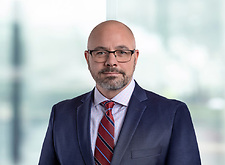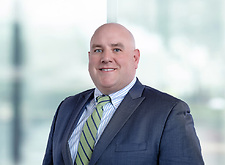SBA Issues Interim Final Rule to Implement the American Rescue Plan Act’s Modifications to the Paycheck Protection Program
On March 11, 2021, President Biden signed the $1.9 trillion American Rescue Plan Act of 2021 (“ARPA”) into law. Among other things, the legislation infused another $7.25 billion into the Paycheck Protection Program (“PPP”) and expanded the program to additional 501(c) non-profit entities, digital news publishers, and shuttered venue operators. It also earmarked $28.6 billion for relief to the restaurant industry through a new grant program. The SBA published a new Interim Final Rule (“IFR”) on March 18, 2021 to begin implementing the statutory changes and conform previously issued rules to the new legislation.
PPP First Draw Eligibility
Under ARPA and the IFR, eligibility criteria for First Draw PPP loans is expanded to encompass NAICS 72 businesses with no more than 500 employees per physical location. Internet-only news and periodical publishers assigned NAICS code 519130 are also now eligible for a First Draw loan, provided the business employs not more than 500 employees per physical location (or meets the alternative size standard for code 519130 in 13 C.F.R. § 121.201) and certifies that the proceeds of the loan will be used to support expenses for local or regional news. The IFR waives affiliation rules for NAICS 72 entities and digital news and periodical publishers consistent with the expansion of eligibility.
The general eligibility of tax-exempt nonprofit organizations has also been expanded to include all IRC Section 501(c) organizations, except those falling under subparagraphs (3), (4), (6), and (19), provided the entity’s lobbying receipts and activities are no more than 15% of its total receipts and activities, the total cost of lobbying activities did not exceed $1 million during the most recent tax year ending February 15, 2020, and it employs no more than 300 employees. Nonprofit entities falling under Sections 501(c)(3), (c)(6), and (c)(19) were previously addressed in prior rulings, and remain subject to their subsection-specific eligibility requirements. All 501(c)(4) entities remain ineligible for PPP loans.
PPP Second Draw (PPP2) Eligibility
ARPA also expanded PPP2 eligibility and affiliation waivers to include internet-only news and periodical publishers and the expanded group of additional covered nonprofit entities. Eligibility is subject to a 300-employee cap per physical location and other generally applicable PPP2 eligibility requirements.
Shuttered Venue Operators
The Economic Aid to Hard-Hit Small Businesses, Nonprofits, and Venues Act (“Economic Aid Act”) as adopted on December 27, 2020 created a Shuttered Venue Operator (“SVO”) grant program benefiting live venue operators, theatrical producers, live performing arts organization operators, museum operators, motion picture theatre operators, and talent representatives. The Economic Aid Act, however, also provided that businesses receiving an SVO grant were ineligible for a First Draw PPP loan. ARPA modified the eligibility rules in certain circumstances, allowing some businesses to receive both an SVO Grant and a PPP loan, but amounts may be offset depending on the timing:
(a) If the shuttered venue business or operator receives a PPP loan after December 27, 2020 and is subsequently approved for an SVO grant, the amount of the SVO grant will be reduced by the amount of a First Draw or Second Draw PPP Loan.
(b) If the shuttered venue business or operator receives both a First Draw and Second Draw loan after December 27, 2020 and is subsequently approved for an SVO grant, the amount of the SVO grant will be reduced by the combined amounts of both PPP loans.
(c) If the shuttered venue business or operator received the PPP loan before December 27, 2020, it will not reduce the amount of the SVO grant.
SVO applicants for PPP loans or SVO grants should pay particular attention to the rules as applicable to their situation, and stay tuned for any subsequent revisions which may follow.
Non-forgivable COBRA and Employee Retention Credit Payroll Costs
ARPA amended and clarified certain “payroll cost” forgiveness exclusions related to the Employee Retention Credit and COBRA coverage. The changes apply to both First Draw and Second Draw loans. The IFR implements these changes and clarifies that the following “payroll costs” are ineligible for loan forgiveness:
(a) qualified wages taken into account in determining (i) the Employee Retention Credit under section 2301 of the CARES Act, as amended by section 206 of the Taxpayer Certainty and Disaster Tax Relief Act of 2020 (Relief Act), (ii) the Employee Retention Credit under section 3134 of the Internal Revenue Code; (iii) the disaster credit under section 303 of the Relief Act, and
(b) premiums for COBRA continuation coverage taken into account in determining the credit under section 6432 of the Internal Revenue Code.
The exclusion also applies to individuals with self-employment income who file IRS Form 1040, Schedules C or F.
Additional Support for Restaurants
ARPA established a new grant program to provide additional relief to the restaurant industry. It created a $28.6 billion Restaurant Revitalization Fund through which the grants will be administered. Grant amounts are capped at $5 million per physical location, or $10 million in the aggregate. Significantly, the grant program will be available to more than just traditional restaurants and will include restaurants, food stands, food trucks, food carts, caterers, saloons, inns, taverns, bars, lounges, brewpubs, tasting rooms, taprooms, and licensed facilities or premises where the public may taste, sample, or purchase products. Businesses that own or operate (together with affiliates) more than 20 locations, or are operated by State or local government, or which have either received a Shuttered Venue grant or have such an application pending, are ineligible. Restaurant grants will be based primarily on a demonstration of pandemic-related revenue losses and gross receipts comparisons and calculations for operational businesses, the application of which will depend on the dates when the business was operating. For purposes of the calculations, however, pandemic-related revenue losses will be reduced by amounts received through PPP and PPP2 loans. Notably, the grant program also affords assistance to eligible entities that have not yet opened as of the time of the grant application, so long as they have incurred payroll costs as of the date of ARPA’s enactment. Components of these various formulas still need to be determined by the SBA’s Administrator, and presumably will be the subject of a forthcoming rule in the near future.
Restaurants and other eligible entities may use grant funds for payroll costs and other expenses consistent with how PPP loan proceeds may be used. But the permitted uses under the restaurant grant program are broader and afford wider latitude to grant recipients to cover certain other expenses incurred as a direct result of, or during, the COVID-19 pandemic. Additional allowable uses of restaurant grant money include payment of both principal and interest on mortgages; food and beverage expenses that are within the scope of the normal business practice of the entity before the covered period; maintenance expenses, including construction to accommodate outdoor seating or walls, floors, deck surfaces, furniture, fixtures, and equipment; paid sick leave; and operational expenses. ARPA also provides additional flexibility to the SBA through a catchall allowing for “[a]ny other expenses that the Administrator determines to be essential to maintaining the eligible entity.” The “covered period” during which such expenditures must be made is both backward- and forward-looking, spanning from February 15, 2020 through December 31, 2021.
ARPA requires the SBA Administrator to initially prioritize the awarding of grants to small businesses owned or controlled by women, veterans, or other socially and economically disadvantaged groups, all as defined in the Small Business Act. This prioritization will be effective during the first twenty-one day period in which the SBA is awarding the grants.
The SBA’s March 18 IFR does not include details about this new grant program. More information on program mechanics, formulas, and the application process should be forthcoming from the SBA in the near future. Given its breadth and flexibility, this grant program will undoubtedly be popular with struggling food and beverage establishments. Those interested in seeking a grant will be best served by monitoring the situation and applying as soon as possible.
If you have questions about PPP or PPP2 loan eligibility, forgiveness, the Restaurant Revitalization Fund, or concerns about strategies to better protect your business from SBA review or other government scrutiny, please call Jason Markel (716.848.1395), Reetuparna Dutta (716.848.1626), or Benjamin Zuffranieri (716.848.1469).
Featured
- Partner
- Partner
- Partner
- Partner
- Partner
- Partner
- Partner
- Partner
- Partner
- Partner
- Partner
- Partner
- Partner
- Partner
- Partner
- New York City Office Managing Partner
- Partner
- Partner
- Partner
- Managing Partner




















